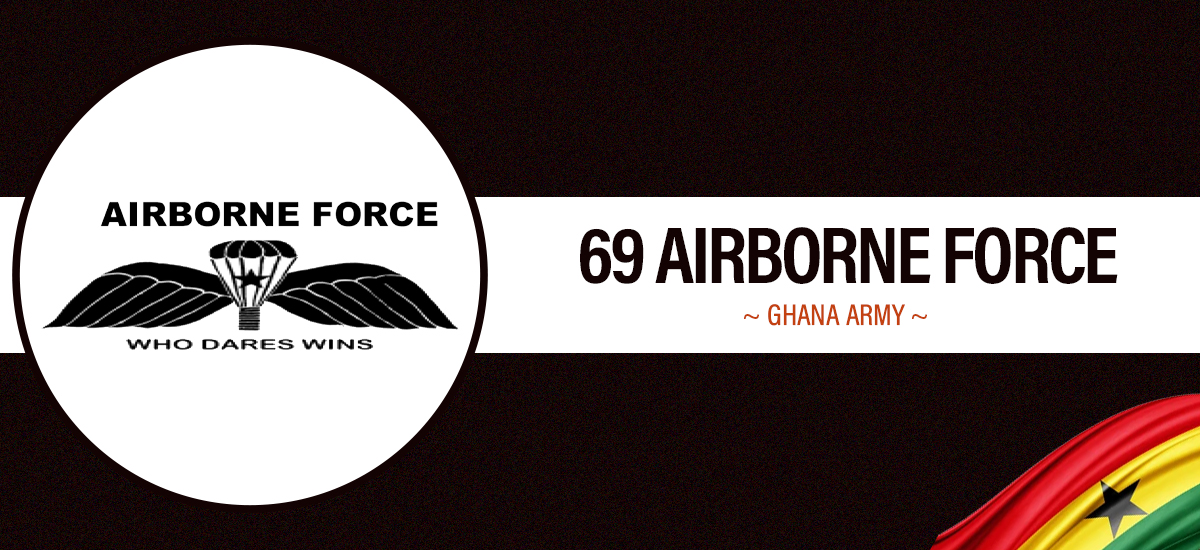
The history of the ABF dates back to 1961 when the Airborne Training School (ATS) was established at old Tamale Airport. The roles assigned to ATS were firstly; to train mil personnel in para jumping techniques and to develop air supply techniques. The first OC was Sqn Ldr Brieley, who along with 3 NCOs were seconded from the Royal Airforce (RAF) as PJIs and QM. On 16 Sep 61, 4 Ghanaian Officers and 9 NCOs were the first to be posted to the school after completing a PJI course in the UK. On 14 Jun 62, the first life para descent in Ghana was conducted at Kumbugu Dropping Zone and about two weeks later a demo in life descent and supply drops were staged at Ghana Military Academy. The dignitaries included the then president of Ghana, Osagyefo Dr Kwame Nkrumah. The first para course was then organised for 3 Officers and 23 men and they passed out 10 Aug 62 after 7 weeks training.
With the increase in strength of qualified parachutists (523 by end of Sep 62), on 11 Apr 63 authority was given for the formation of a para Bn. It began with a Coy co-located with the ATS. By 1966, 3 para Coys had been formed and were moved from the old airport to Kaladan Barracks and separated from ATS, though they continued to use the same facilities. In 1969, para Bn moved to Kamina Barracks and ATS was brought under command as a training Coy. With the increasing use of sophisticated surveillance devices to detect troop movement and the need to achieve surprise in battle, countries have experimented with small but highly trained and equipped troops capable of beating most of these surveillance devices and moving fast into op theaters for results.
Examples are the marines, legion, commandos and SAS. Officially, this was the reason given by the Government of the Second Republic when the para Bn was disbanded and the Airborne Force (ABF), with a far lesser strength, established on 10 Oct 70. The unit was to specialize in commando and counter terrorist ops. It was re-located to Barwah Barracks and co-located with Airforce. It was also placed under Army HQ for OP con and HQ 2 Bde for Administrative Con. The Establishment order Number Army/1/1 dated 10 Oct 70 was approved for implementation with effect from 15 Jan 71.



To present the Airborne Force
The roles of the ABF can be discussed under 3 headings and these are Operational Role, Parachute Training and Ceremonial/Sports Parachuting.
It must be made clear that although ABF are supposed to be Commando trained, except for the toughness that is imbued into students during the pre-para phase of the course this aspect has not been part of the training package for a long time. Most of the unit’s training is geared towards conventional training and para training for unit pers, Officer Cadets and recently other young soldiers. Free fall and supply drops are seldom done because of the lack of enough and appropriate parachutes. Recently the unit has also begun training her own PJI’s Riggers and Pathfinders.
The unit has an operating ORBAT and a proposed one, which should have been approved more than 10 year ago but for the lack of both human and material resources to meet the proposal this proposal has not yet been approved. In 2003, the unit was asked to make another proposal but this is also yet to be approved. The reason however for proposing a new ORBAT is as follows;